I entered my friend’s small apartment in New York. In the entrance is a big bag of empty water bottles. We go to the kitchen and ask for a glass of tap water. My friend goes to the fridge, takes out a water bottle, opens the cupboard, takes a glass and fills it up.
Why does my friend, millions of other New Yorkers, 55 million households across North America and 600 million worldwide drink bottled water? What is it that keeps us so attached to a drink that comes almost for free from the tap?
Contents
Is it healthier than tap water?
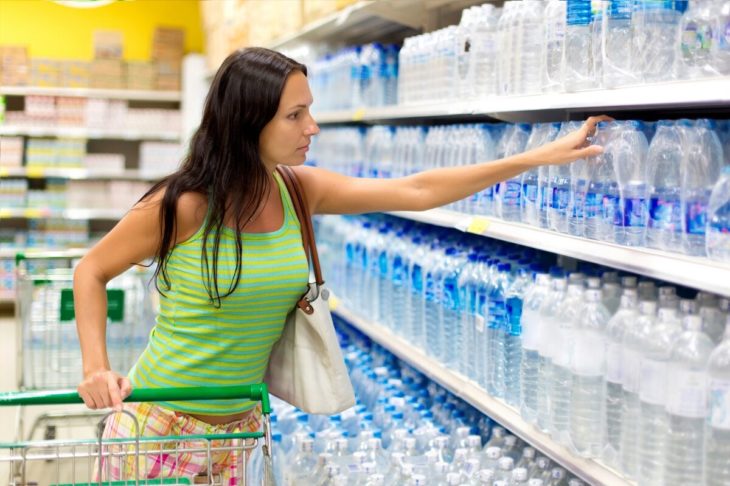
Source: Pinterest
There’s no scientific evidence that bottled water is healthier than public tap water that adheres to EPA and international quality standards. In fact, much tap water contains more minerals than bottled water and 94% of bottled water has been found to contain microplastics.
FDA does not require bottled water companies to disclose the source of the water, treatment processes, or contaminant tests. There aren’t as many regulations for specific contaminants, and inspection of bottled water plants only happen once every few years.
The best solution, if you want to be certain to avoid contaminants, is by using a high-quality water filter.
If your tap water is drinkable according to your local water provider then it’s most likely as healthy or healthier than bottled water. If you want to be on the safe side use a water filter.
But contaminants are often found in tap water?
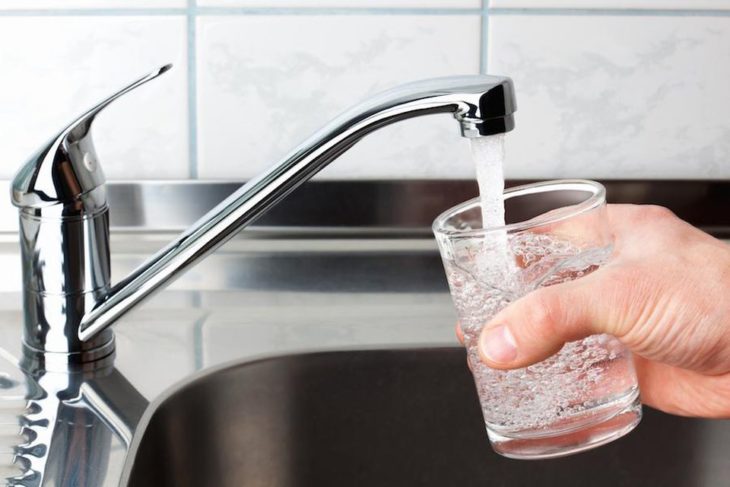
Source: Shutterstock
It’s, unfortunately, true that leaching pipes and water tanks contaminate the water. It’s not common but this particular issue in areas with soft water and poorly maintained pipes. The most talked about the case of this is lead found in tap water in Flint, Michigan but lead has been found in tap water throughout the world.
Another myth is that tap water contains high levels of pharmaceuticals including contraceptives, antidepressants and hormones. It’s true that these chemicals have been found in tap water but the concentrations are extremely small and very unlikely to impact humans.
One concerning contaminant found in tap water is microplastics. In a 2018 study by Orb Media microplastics were found in 93% of the samples taken in the US. At the same time, it was found in 94% of bottled water samples.
Similar studies of arsenic in bottled water have also shown that bottled water is not free from contaminants. Out of 130 bottled water brands tested in 2019, Consumer Reports found 11 contained detectable arsenic levels, including six with 3 parts per billion or more.
What about bars and restaurants?
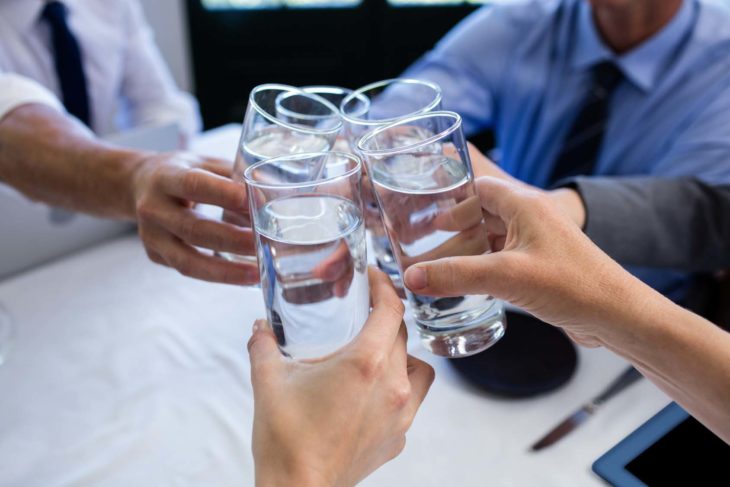
Source: Shutterstock
Assuming that it’s public tap water in the United States or Europe then it’s most likely as safe or healthy as bottled water. Especially if the kitchen uses it for cooking and washing fruit and vegetables. Therefore always ask for tap water. If the restaurant advises against drinking it then at least you know.
Does it taste better?
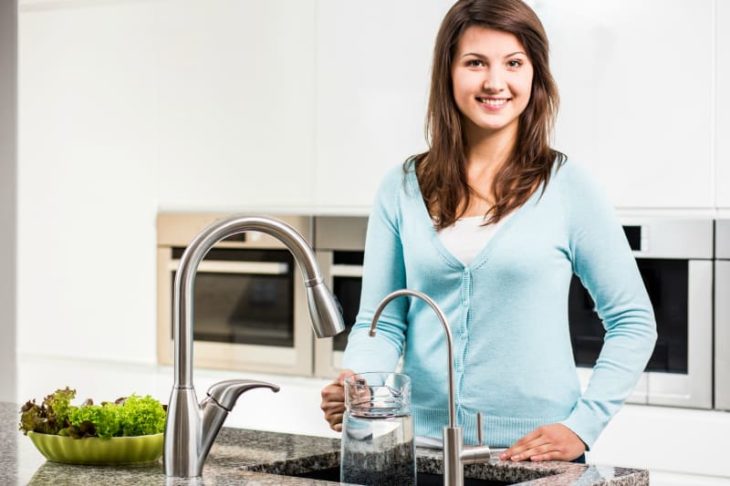
Source: Shutterstock
This is a common argument. But in almost all blind tests tap or filtered tap water beat expensive brands
Only 1/3 of the people can taste the difference between tap and bottled water in New York and 45% preferred tap water.
London tap water scored 4th in taste in competition with 23 expensive bottled water brands.
In a study by Bernstein Research of premium bottled water vs filtered tap water, filtered consistently came out at the top.
So if you don’t like the taste then get an affordable water filter and make your own “premium” water.
Note that not all filters are created equal. Reverse Osmosis (RO) filters generally remove the most contaminants but they also remove the minerals. Therefore pure RO water is slightly acidic and tastes flat.
Isn’t bottled water more convenient?
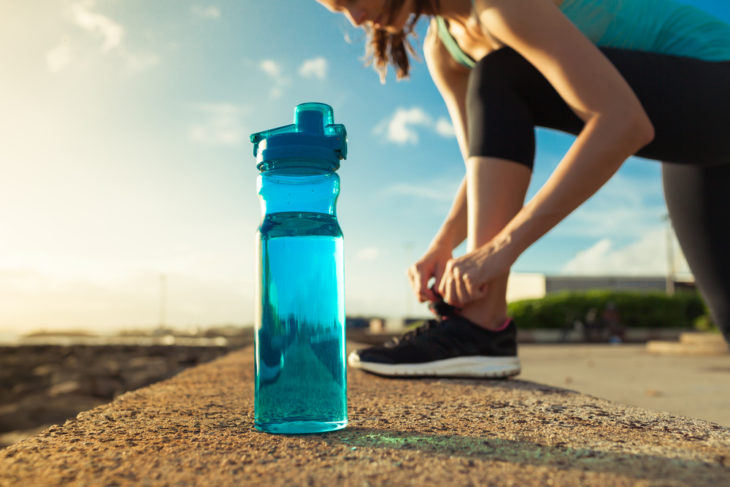
Source: Shutterstock
Is it more convenient to go to the store, carry home heavy bottles and finally bin them compared to turning on your tap? Most likely not. If you need water on the go just get a refillable water bottle. Even if you order bottled water online and have it delivered it needs to be stored somewhere at home, and the empty bottles are thrown away and recycled. Tap water doesn’t.
Does it make financial sense?

Source: Pinterest
Premium water such as Fiji or Evian will cost $1 or more per liter versus the cheapest white label brands around $0.20. This means that a normal bottled water consuming household spends between $150 to $750 per year. Add the cost of transportation to this and it’s probably significantly more.
Tap water costs about $0.004 per gallon ($0.001 per liter) which means the equivalent of $1 per year. The cost of a high-quality water filter starts at about $60 per year including refills, less than half of what the average family would spend on the cheapest brand of bottled water.
In conclusion, anyone will save money by drinking tap or filtered tap water.
But if the bottles get recycled then plastic is not an issue?
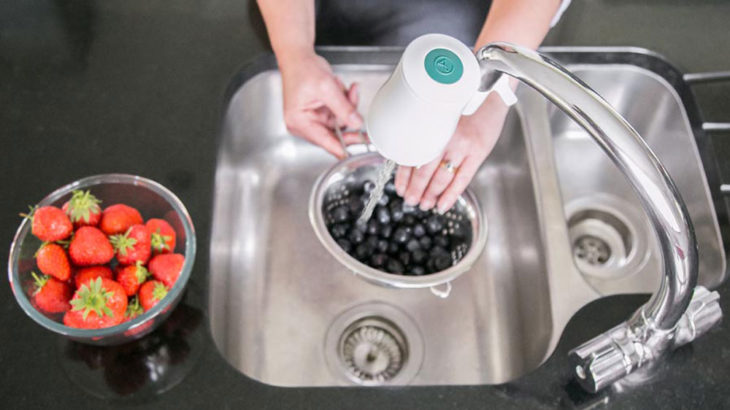
Source: Pinterest
This is unfortunately not true. First of all, less than 10% of plastic gets recycled but even when it does there are high water and CO2 footprint of transportation, the bottling, and the recycling process. Therefore it’s always better to avoid bottled water.
In addition to this, there are now water filters with biodegradable cartridges such as TAPP Water faucet filters and Soma pitcher filters. These leave almost zero plastic residues.
Wrapping up the bottled vs tap water debate
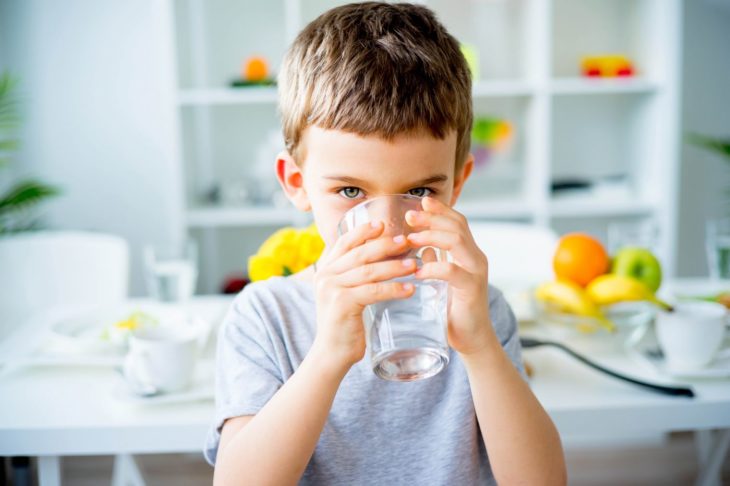
Source: Shutterstock
In conclusion, there’s really no reason to consume bottled water if you have access to clean public tap water. Bottled water is not healthier or safer than tap. If you’re worried about contaminants from the pipes or don’t trust your local water provider then get an affordable water filter. Always keep a refillable water bottle with you and you’ll never need to buy bottled water again. There is no excuse to consume bottled water.
